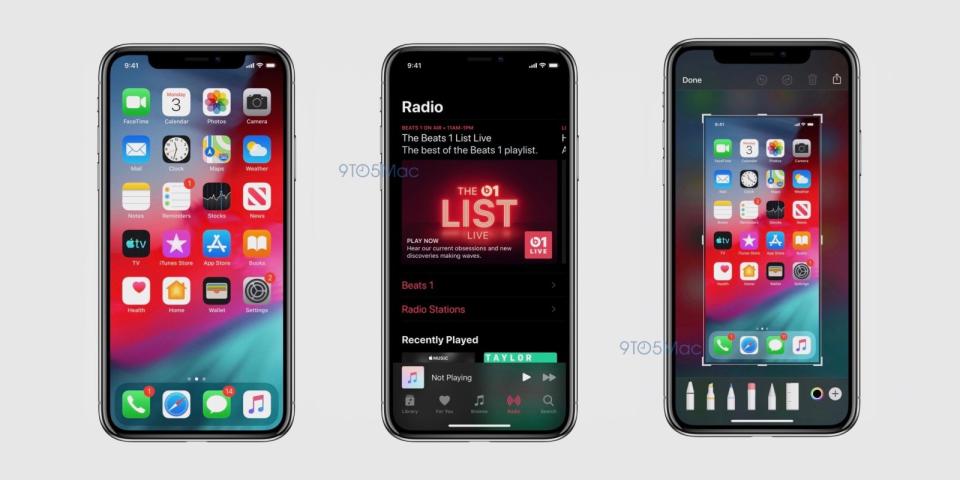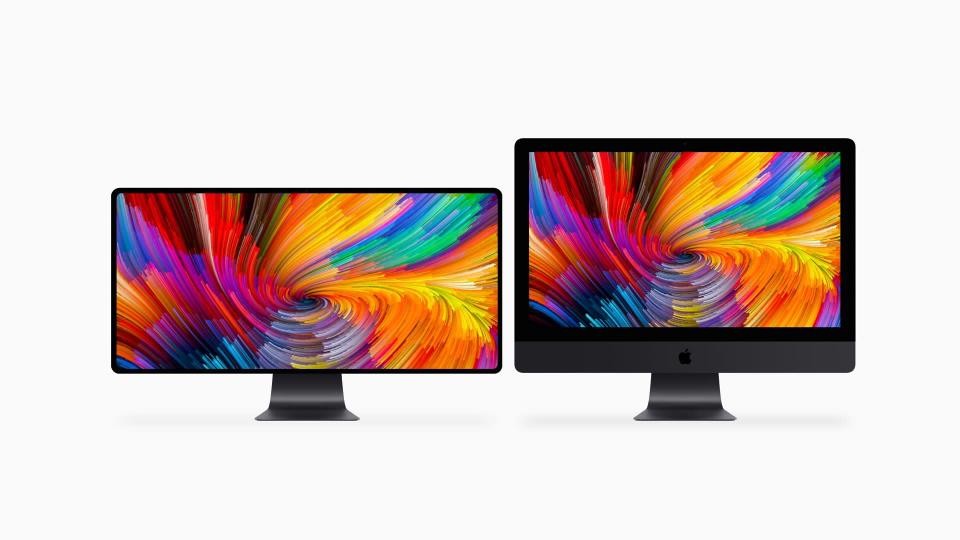Engadget has been testing and reviewing consumer tech since 2004. Our stories may include affiliate links; if you buy something through a link, we may earn a commission. Read more about how we evaluate products.
What to expect from Apple at WWDC 2019
This year's Worldwide Developer Conference should make a big splash.
Next week, thousands of people will flock to San Jose, California; nestle into their seats at the convention center; and listen to Apple unspool its vision for the future of software. They'll get their first concrete look at iOS 13 and learn what it means for their phones and tablets. They'll hear more about how the gap between iOS and Mac apps is starting to shrink -- albeit slowly. They might even get an early look at some new Pro-level hardware. And since we'll be there covering the show in full, you'll hear all about that stuff as soon as we do. Apple will kick off the show in earnest with a keynote address on June 3rd at 10 AM Pacific/1 PM Eastern, but there's been no shortage of rumors and innuendo ahead of the event. Let's take a few moments to run through what we know -- and what we think we know -- about Apple's biggest updates. As usual, expect to see Apple reveal the latest version of its mobile operating system, iOS 13. Just like last year's release, iOS 13 is expected to pack a series of bug fixes and performance enhancements that should ensure the update runs well even on older devices. We've also heard that Apple has made subtle changes to some interface animations, so your iPhone (or iPod touch) might feel a bit different once the update goes live. The most notable interface change here, though, might be the inclusion of a system-wide dark mode, since smartphone fans have come to regard it as a must-have. Based on images obtained by 9to5Mac, exactly how dark things look depends on what you're looking at: The home screen is left largely untouched, save for the new dark background for the app tray. The difference is much more notable when you're looking at primarily white apps, like Apple Music, which benefit from a full makeover. And since OLED screens like the ones used across Apple's most recent iPhones don't use any power to display the color black, it's possible dark mode could at least marginally improve your device's battery life. Expect a lot of changes to Apple's suite of default iOS apps. A detailed Bloomberg report suggests Messages will get a new design that adds profile pictures and more-nuanced privacy settings, all leading to a distinctly WhatsApp-y experience. The stock Mail app, meanwhile, could get the ability to mute threads and automatically sort emails into buckets for categories like "travel" and "purchases." Considering how bare bones the iOS Mail app has always been, these changes will go a long way in making it feel more complete compared to the many sophisticated options available in the App Store. Similarly, the stock Reminders app should also get fleshed out with a new design that's better for managing all of your tasks in progress. Some of iOS 13's updates are all about creature comforts. In addition to the Bedtime mode that launched in iOS 12, Apple is said to have built a Sleep mode that -- when enabled -- turns on Do Not Disturb, mutes incoming notifications and darkens the lock screen so it doesn't nuke your eyes when you check the time in the middle of the night. And parents can rest a little easier with new controls that can limit who their children can contact and when, presumably on an app-by-app basis. The list goes on: You'd be smart to expect updates to apps like Books, Maps and Find My Friends, which could be combined with Find My iPhone into an all-in-one locator app. Safari could get a proper download manager, bringing it in line with its Mac counterpart. And if we're lucky, Apple could unveil a swipe-to-type input method for the iOS keyboard, though Bloomberg suggests this feature might remain under wraps for now. iOS 13 is shaping up to be a significant update, and it may mean big things for the iPad, which Apple has long insisted is its vision for the future of personal computing. The details are thin at the moment, but Apple is expected to show off a new multitasking interface. And beyond that, we've heard that Apple will also allow developers to build iPad apps with discrete sections you can break out into their own movable windows. Third-party developers and hackers have cooked up similar features, but if Apple does implement this in iOS 13, it might completely change how we interact with software on the iPad. A scheme like this seems especially potent when you consider rumors that the iPad might get support for wired mice. MacStories founder Federico Viticci recently said on the Connected podcast that Apple has been working on wired mouse support (no Bluetooth, sadly) for a while as an accessibility feature, and noted app developer Steve Troughton-Smith didn't take long to back up his assertion on Twitter. While there's no telling whether this will actually get a nod onstage, it's likely that only owners of recent iPad Pros (and their USB-C ports) would get to use it for a while. Apple will also reveal a feature that allows iPads to act as secondary screens for Macs, which might sound a little familiar: Apps like Luna and Duet Display already do the same thing. In addition to extending your Mac's display onto your iPad, you'll also reportedly be able to interact with apps and menus using the Apple Pencil. There are some big unanswered questions though: It's not clear which versions of the iPad this feature would work with or if you'll have to physically connect the tablet to a Mac for it to work. Around this time last year, the big WWDC rumor was that Apple would announce its plans to merge iOS and macOS so developers could build a single app that could thrive across different kinds of devices. Apple's Craig Federighi was quick to put the kibosh on those notions -- for the short term, anyway -- but the company did talk up a new version of the UIKit framework that would allow developers to easily migrate their iOS apps to Macs. To prove the idea had legs, Apple released versions of the News, Stocks and Voice Memos apps for macOS Mojave that were adapted from their iOS counterparts. We're expecting Apple to do the same for this year's release, with the Books, TV and Podcasts apps getting some stage time. More importantly, though, this is the year that third-party developers will actually be able to try these updated tools for themselves. This is important for a few reasons: First, it means Macs could see an influx of new software. And second, this sort of early look gives developers time to figure out how best to design iOS apps that work elegantly on iPads and traditional computers. Apple will also use its WWDC stage to officially announce macOS 10.15, which at this point seems packed with plenty of features that originated on iOS. Reports indicate that Siri shortcuts, which allowed people to create voice-activated macros combining actions from different apps, will make the leap to macOS. Ditto for features like Screen Time and iMessage effects (though whether anyone really wants those on their computers remains dubious). It's also worth noting that macOS 10.15 is the last version of Apple's desktop OS to support 32-bit apps. That probably won't affect most of the things you use regularly, but if you rely on legacy software on a daily basis, it's worth checking your Mac's System Report to see what's compatible going forward and what's not. Apple's wearables are an increasingly important part of the company's bottom line, and it has big plans for watchOS this year. Most notable is its decision to bring a version of the App Store directly to your wrist, though we're not quite sure what form it will take. The company could give users full access to compatible software in the Store, but it seems more likely that Apple would instead choose to curate and highlight specific apps for the small screen. Apple is reportedly going to bring apps like Voice Memos and Books to watchOS too, so you can leave yourself messages and listen to your audiobooks without having to keep your iPhone handy. Meanwhile, the health-conscious among you will probably appreciate a pair of new apps Apple is rumored to announce: One is meant to remind you to take your medications while the other helps track menstrual cycles. The Apple TV recently got a significant overhaul, so there probably won't be too much news on that front at the show. Another bit of Apple's home hardware could be in for a big update though: The HomePod will reportedly gain multiuser support, so it can recognize who is speaking to it and provide results and perform actions specific to that person. (As it stands, the HomePod will gladly listen to commands anyone gives it, but it can only be connected to a single person's Apple ID.) At last year's WWDC, we didn't get so much as a hardware refresh. That might sound like par for the course considering this is a show for software developers, but Apple has historically used its WWDC stage to highlight new products. This year's proceedings might include some serious updates. This year, we'll almost certainly get our first look at the new Mac Pro, and there's a decent chance it will no longer look like a beautiful trash can. With the last version of the Mac Pro, Apple designed itself into a corner: It remains a gorgeous piece of machinery, but the limitations of its cylindrical design meant it wasn't quite as flexible as Apple needed it to be. That led the company to "completely rethink" its Pro-level desktop, and considering the audience at WWDC, it would make sense to show off its progress next week. That said, we still don't know much about Apple's big redesign: For a company that's so frequently affected by leaks, I'm still a little shocked that more-concrete Mac Pro details haven't surfaced yet. When Apple first started talking about redesigning the Mac Pro, it also pointed to the need for a new, pro-grade monitor to go with it. (The company stopped building standalone displays in 2016, instead pushing LG screens in its online store.) So far, rumors suggest that we'll get a look at a 31.6-inch, 6K display, which is pretty impressive on its own. What we don't know for now is the screen's aspect ratio: The LG monitors that Apple sells are all 16:9, but ultra-wide displays have become increasingly popular in recent years and 9to5Mac lays out a compelling argument for why it would make sense for Apple to embrace the trend. For those of you who get really persnickety about display quality, we're fairly sure that the new Apple display will rely on a miniLED backlighting system meant to provide deep blacks and improved color contrast. Last, there's been persistent talk that Apple has been working on a tiny, Tile-like tracker that you stick on your belongings in case they go missing. Reports suggest these trackers will be tied to your iCloud account, and you'll get notifications on your devices when you wander away from an item when a tracker is stuck to it. This is arguably a strange space for Apple to start digging into now, but the company could benefit from a high-volume gadget as useful as these trackers could be. Even after all this, there are still probably a few surprises Apple has saved for its keynote address. And once all that's finished, there's still the customary Platforms State of the Union, not to mention all those developer sessions. Needless to say, next week is going to be a busy one -- stick around for more coverage once we set foot in San Jose.
iOS 13


What about iPads?
If you missed last week's @_connectedfm, @viticci had a pretty interesting scoop that he'd been sitting on re mouse support coming to iPad as an accessibility feature. As far as I'm aware, that *is* indeed in the works. I feel like every pro user will turn that on, day one 😂
— Steve Troughton-Smith (@stroughtonsmith) April 22nd, 2019

macOS 10.15

Watches and home

New hardware


